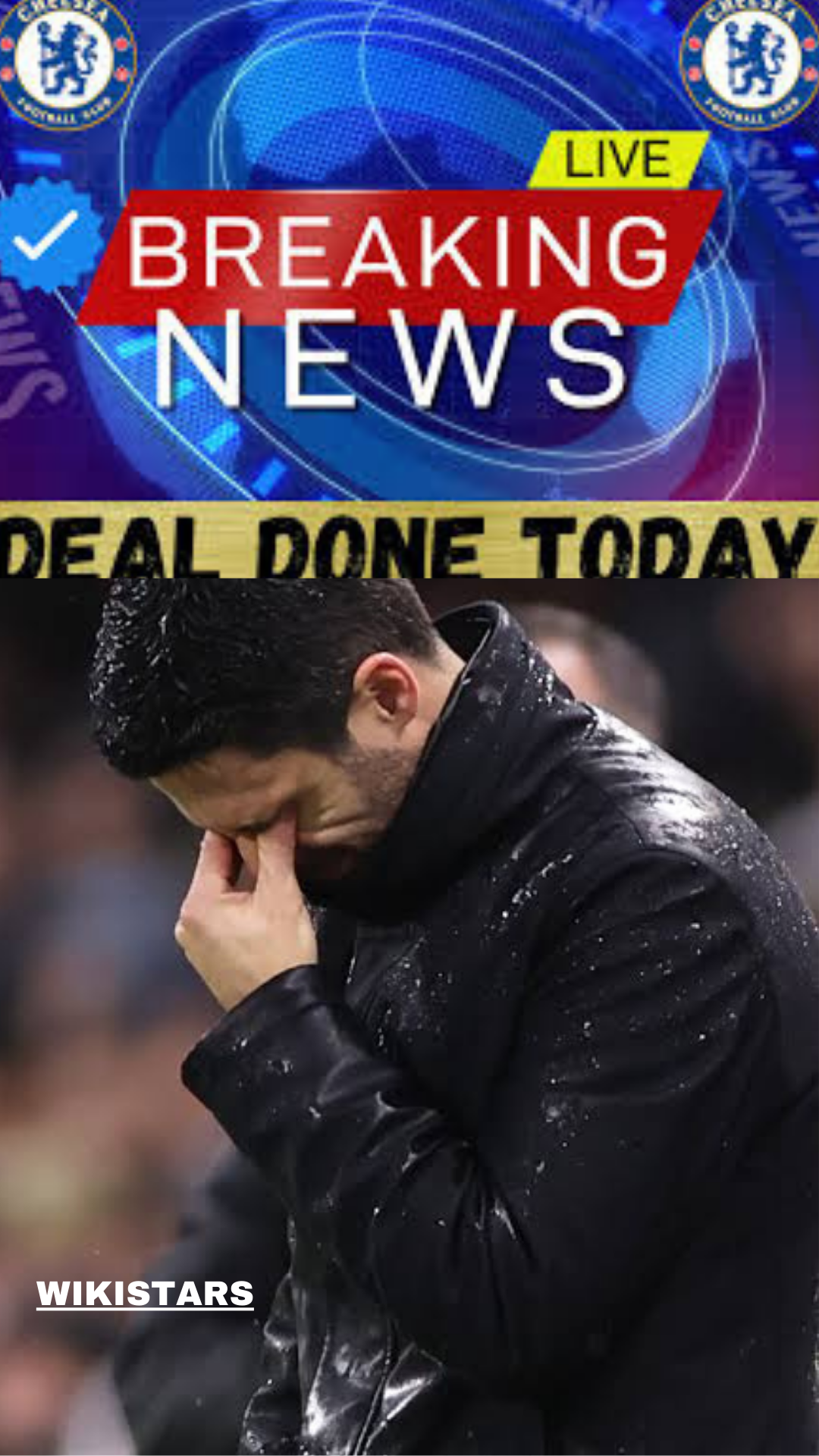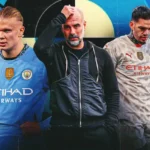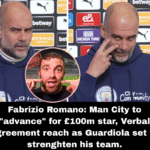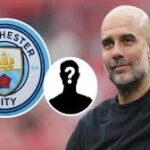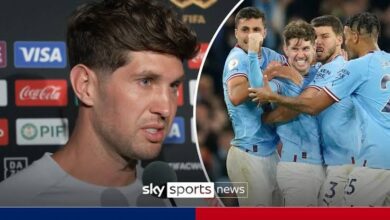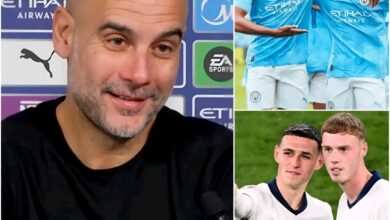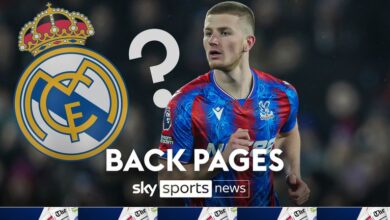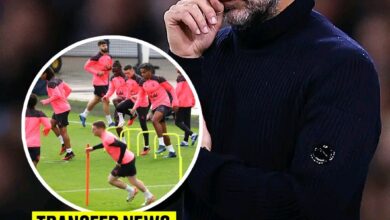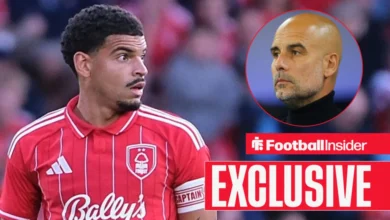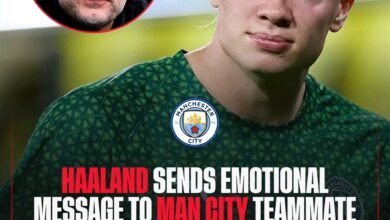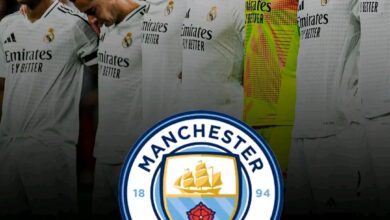Nottingham Forest Rejection to Manchester City History: The Shaun Wright-Phillips Story
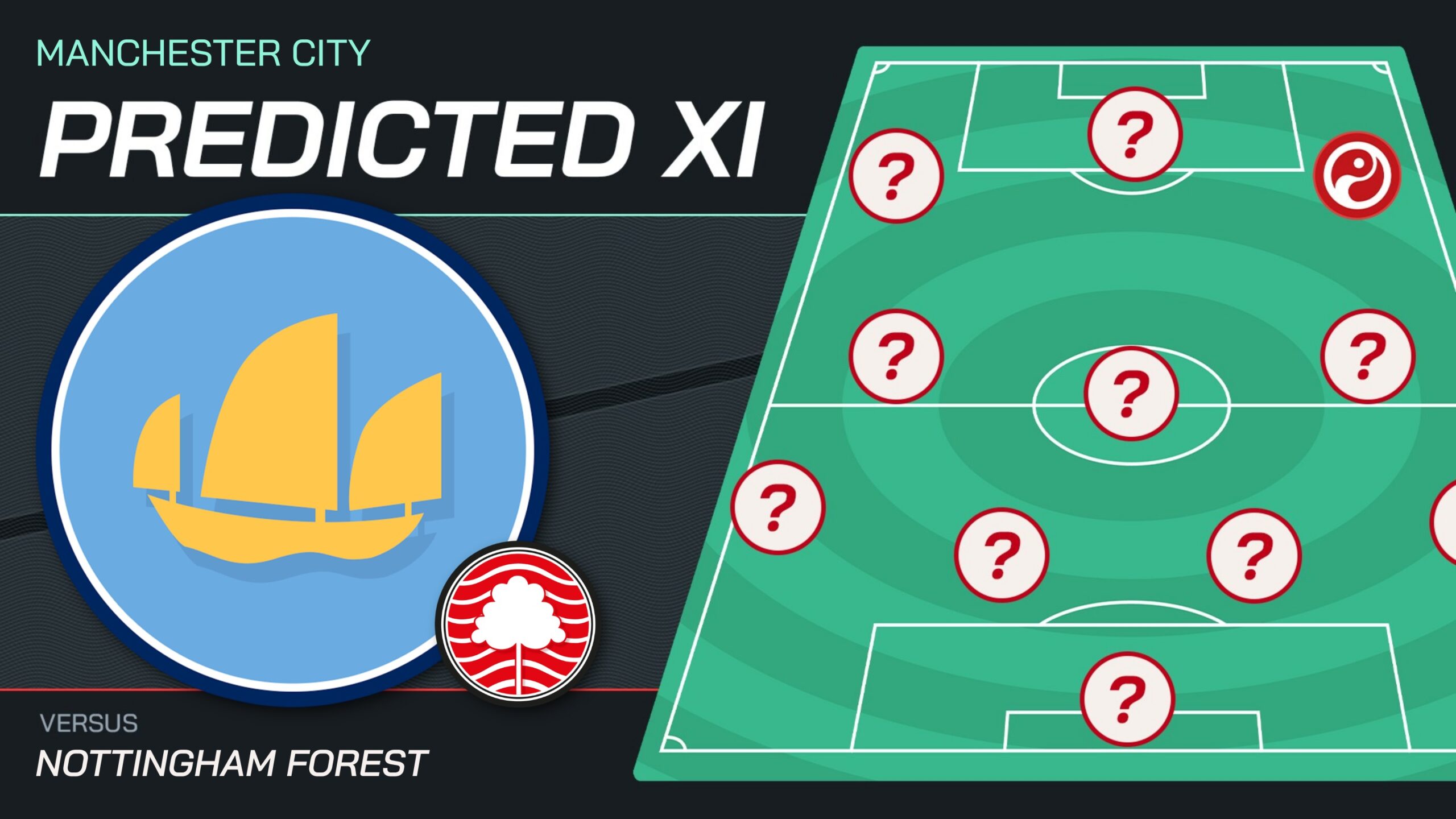
As Manchester City prepare to face Nottingham Forest in this weekend’s FA Cup semi-final, the fixture brings together two clubs whose paths have crossed in unexpected ways throughout football history. While the immediate focus falls on City’s interest in Forest’s Morgan Gibbs-White, the story of a previous transfer between these clubs offers a remarkable narrative about rejection, redemption, and football’s unpredictable nature.
Twenty-five years ago, a diminutive 17-year-old was told he wasn’t good enough for Nottingham Forest. Today, that same player is celebrated as one of Manchester City’s most beloved figures whose transfer once saved the club from potential financial ruin. This is the story of Shaun Wright-Phillips – the player Forest rejected who went on to make history at Manchester City instead.
When Manchester City and Nottingham Forest face off in their FA Cup semi-final this weekend, much attention will be on Morgan Gibbs-White, the dynamic midfielder who has been instrumental in Forest’s remarkable season. City will hope his influence remains a footnote in their journey to another final, while Forest are counting on him to be the catalyst for an upset.
It was Gibbs-White who orchestrated Forest’s 1-0 victory over City in their Premier League clash just last month. His exquisite crossfield pass found Callum Hudson-Odoi, whose finish proved the difference in a result that helped Forest maintain their surprising position above City in the league table. This single moment encapsulated what has made Gibbs-White so coveted – vision, execution, and the ability to change games at the highest level.
Under Nuno Espírito Santo’s guidance, Forest have emerged as the Premier League’s surprise package this season, challenging for an unlikely Champions League spot. They are also pursuing FA Cup glory, which would represent their first major trophy since lifting the League Cup in 1990. City stand in their way this weekend, but the relationship between these clubs extends beyond this single fixture.
Beyond the immediate battle on the pitch, City’s interest in Gibbs-White for a potential summer transfer adds another dimension to their rivalry. With Kevin De Bruyne’s impending departure creating both a void in midfield and space on the wage bill, Gibbs-White has been identified as a prime candidate to help fill both gaps. However, Forest are in a strong negotiating position, especially if they secure a top-five finish, and reports suggest it could take close to £100 million for City to secure his signature.
While City’s potential pursuit of Gibbs-White represents their modern-day recruitment strategy, one of their most significant signings from Forest took place in very different circumstances. In the late 1990s, Manchester City had slumped to the third tier of English football while Forest had just experienced relegation from the Premier League. As both clubs fought for promotion from their respective divisions, a talented young forward found his way to Maine Road after being deemed surplus to requirements at the City Ground.
“When I was at Forest, I was doing a paper round to get up there, and then went for the last trial,” Shaun Wright-Phillips revealed to his family in 2022. “They said they were happy and on the way back, they just turned around after saying they were going to give me the contract, on the train down, they turned around and said, ‘sorry we have kind of changed our mind, you’re basically too small and not good enough.'”
The rejection was brutal in its simplicity. For a teenager who had invested so much hope in making it at Forest, the verdict that he was “too small and not good enough” could have been career-ending. Many young players might have abandoned their professional aspirations after such a setback. Instead, Wright-Phillips found himself dropping down a division to join fallen giants Manchester City – a club that would soon become the centerpiece of his identity.
“When you’re young and come from South London, I didn’t really support anybody I just followed anybody Dad played for,” Wright-Phillips told the Manchester Evening News in 2023, referencing his adoptive father, Arsenal legend Ian Wright. “When I got released from Forest and signed for City when they were in Division Two, to see how the fans were and then in the YTS [youth team] seeing the fans turn up to watch you train at Platt Lane I just fell in love with the club.”
This love affair was mutual. While City were struggling in the lower divisions – a far cry from their current status as one of Europe’s elite clubs – they discovered in Wright-Phillips a player whose energy, skill, and determination perfectly aligned with what their supporters cherished. The atmosphere at Maine Road, City’s historic former ground, created the perfect environment for a young player seeking to prove himself.
“I don’t know how they did it but however they sat everybody at Maine Road the noise and atmosphere was electrifying,” Wright-Phillips recalled with enthusiasm. “It was like every time you came onto the pitch before the start of the game you had goosebumps from the amount of noise. No matter how bad it was – and sometimes it was bad! – it was like a rollercoaster but no matter what the atmosphere was or who you played against it was like going down that rollercoaster hill where everybody just cheers for 90 minutes. It was insane.”
That atmosphere proved transformative for Wright-Phillips. “No matter how tired you were, because of the fans you always managed to get out that extra shot or run or tackle. That was Maine Road every game.”
Wright-Phillips quickly became a fan favorite at City, his diminutive stature and electrifying pace making him instantly recognizable and beloved by supporters. Despite Forest’s assessment that he was too small, his size became one of his defining characteristics at Maine Road, where fans embraced him as if he had progressed through City’s own academy.
He played a crucial role in the club’s consecutive promotions, helping them climb from Division Two (now League One) back to the Premier League in just two seasons. His direct running, trickery, and eye for goal made him the standout player in a City team that was gradually rebuilding its reputation after years in the wilderness.
The irony of football’s unpredictable path was not lost on Wright-Phillips when, after City’s return to the Premier League, he found himself reunited with Steve Wigley, who had joined Stuart Pearce’s coaching staff in 2001 after previously being part of the Forest academy setup that had rejected the young winger.
“He was part of the Hart syndicate at Forest that released me,” Wright-Phillips revealed. “So all through training Robbie Fowler and Steve McManaman would run past him and be like ‘bet you’re devastated now, right?’ There is always to me a time that comes back around and your football does all the talking.”
And speak it did. Wright-Phillips developed into one of the Premier League’s most exciting wingers during City’s resurgence in the early 2000s. His performances caught the attention of England manager Sven-Göran Eriksson, who handed him his international debut in 2004, and he became a regular fixture in the national team setup.
By 2005, Wright-Phillips had established himself as City’s most valuable asset. When José Mourinho’s newly-crowned Premier League champions Chelsea came calling with a club-record offer of £21 million, it represented both a personal triumph for Wright-Phillips and a crucial financial lifeline for City.
The transfer fee was a vindication of Wright-Phillips’ talent and determination, a definitive response to those who had once deemed him too small to succeed. For City, it was perhaps the most important transfer in the club’s history – albeit one that broke supporters’ hearts at the time.
Few transfers have been as bittersweet yet essential as Wright-Phillips’ move to Chelsea in 2005. While City fans were devastated to lose their homegrown hero, the £21 million fee proved to be the club’s financial salvation during a period of severe instability. Without that injection of funds, many believe City could have faced administration, potentially altering the entire trajectory of the club’s future.
Had City fallen into administration, the Abu Dhabi United Group might never have identified them as a suitable investment opportunity in 2008. The subsequent transformation into a global footballing powerhouse – with multiple Premier League titles, FA Cups, and their first Champions League triumph – might never have happened without the foundations laid by that Wright-Phillips transfer.
The irony cannot be overstated: a player rejected by Forest for being too small ended up playing an outsized role in Manchester City’s survival and eventual renaissance. Forest’s loss became City’s gain in ways that neither club could possibly have imagined at the time.
Wright-Phillips’ time at Chelsea did not unfold as he or Mourinho might have hoped. Despite the prestige of joining the Premier League champions and competing alongside world-class players, he struggled to secure regular playing time at Stamford Bridge. The explosive pace and freedom that had characterized his performances at City were often constrained within Chelsea’s more structured system.
Though he did collect Premier League and FA Cup winners’ medals during his time in London, Wright-Phillips never fully established himself as a first-team regular. The player who had been the standout star at Maine Road found himself as just another talented option in Chelsea’s star-studded squad.
In 2008, as Chelsea were willing to let Wright-Phillips leave and City were entering their new era under Abu Dhabi ownership, the opportunity arose for a reunion. Wright-Phillips returned to Manchester, greeted by ecstatic fans who had never forgotten his contributions during the club’s darker days.
Though the City he rejoined was fundamentally different from the one he had left – with new owners, vastly improved financial resources, and loftier ambitions – Wright-Phillips still managed to carve out a significant role during this transitional period. He spent another three years at the club, contributing to their 2011 FA Cup triumph, which ended a 35-year trophy drought and represented the first silverware of the new era.
His return cemented his status as a club legend, bridging the gap between City’s struggles in the lower divisions and their emergence as Premier League contenders. While his second spell may not have matched the individual brilliance of his first, it allowed him to complete his City story and share in the club’s long-awaited success.
“I never actually thought about it or looked at it any other way,” Wright-Phillips reflected on his connection with City fans. “I just tried to give something to cheer for. As a winger, that’s part of the process, you want to be exciting and give people something to talk about. I just enjoyed that. There were a lot of times in games where I was dead but because I didn’t want to let down people watching me you push yourself to that limit.”
This commitment to the shirt resonated deeply with City supporters. “As soon as you put on that shirt that’s the standard. You go on the pitch and run your heart out no matter what. It doesn’t matter if it goes badly, you fight for the shirt and the fans at Maine Road that’s the bare minimum and that’s what they love about this club.”
As Manchester City continue their pursuit of Morgan Gibbs-White, the parallels with Wright-Phillips’ story provide a compelling backdrop. Both players represent creative, dynamic talents capable of changing games with moments of inspiration. Both have caught City’s attention at different points in the club’s evolution. And both stories highlight football’s inherent unpredictability.
Forest’s decision to release Wright-Phillips for being “too small” ranks among football’s more notorious misjudgments. The error seems particularly stark when considering how many other diminutive players have excelled at the highest level – from Lionel Messi to David Silva – proving repeatedly that technical ability, vision, and determination can more than compensate for physical stature.
City’s subsequent benefit from this oversight changed the course of the club’s history. The transfer fee received for Wright-Phillips in 2005 helped keep the club afloat during financial difficulties, allowing them to remain viable until Sheikh Mansour’s takeover in 2008 ushered in a new era of unprecedented success.
As City now target Gibbs-White, they do so from a position of strength and stability that was unimaginable during Wright-Phillips’ era. The potential £100 million fee represents a stark contrast to the days when selling Wright-Phillips for £21 million was considered a financial lifeline.
For Forest, the lessons of history are clear. While they currently hold a strong position with Gibbs-White under contract and the club pursuing their own ambitious goals, the Wright-Phillips story serves as a reminder of how easily talent can be misjudged and opportunities missed.
Nuno Espírito Santo’s side are enjoying their best season in decades, with Champions League qualification a realistic possibility and an FA Cup semi-final against City offering the chance to reach their first major final since 1992. Gibbs-White has been central to this renaissance, just as Wright-Phillips once was to City’s climb from the third tier back to the Premier League.
When the two teams meet this weekend, the Wright-Phillips backstory adds another layer to an already compelling matchup. City are pursuing yet another trophy to add to their growing collection, while Forest are seeking to recapture past glories and perhaps claim their first major silverware in over three decades.
Gibbs-White will likely be at the heart of the action, his every touch scrutinized not just for its immediate impact on the semi-final but also through the lens of City’s reported interest. His performance against his potential future employers will be particularly significant, especially after his decisive contribution to Forest’s Premier League victory over City last month.
For City, the semi-final represents another step in their pursuit of multiple trophies this season. For Forest, it’s an opportunity to prove they belong among the elite once more. And for neutral observers, it’s a chance to witness the latest chapter in a relationship between two clubs that has produced unexpected twists and turns over the years.
The Wright-Phillips story encapsulates football’s circular nature – how rejection can lead to redemption, how one club’s oversight can become another’s opportunity, and how players discarded for perceived weaknesses can ultimately prove their doubters wrong through persistence and determination.
As City and Forest prepare for their semi-final, the ghost of that decision made over 25 years ago continues to resonate. It serves as a reminder that in football, as in life, doors closing often lead to other opportunities opening, sometimes with consequences that neither party could have anticipated.
Wright-Phillips’ journey from Forest rejection to City icon exemplifies this unpredictability. His transfer saved City from financial disaster, laying the groundwork for their eventual transformation into a global footballing powerhouse. Forest’s mistake became City’s gain in ways that nobody could have foreseen at the time.
Now, as City consider investing a potential club-record fee to bring Gibbs-White to the Etihad Stadium, the Wright-Phillips precedent looms large. Different circumstances, different eras, but the same fundamental connection between two clubs whose histories have become intertwined in unexpected ways.
Twenty-five years after that fateful rejection, Wright-Phillips remains a beloved figure at Manchester City. His journey from Forest castoff to City savior stands as one of football’s more remarkable stories of redemption and vindication. The “too small” verdict that once threatened to derail his career ultimately became the catalyst for his most significant achievements.
As both clubs now compete at the highest level – City as established Premier League champions and European contenders, Forest as resurgent challengers seeking to reclaim their place among the elite – the Wright-Phillips connection offers a timely reminder of football’s capacity for unexpected twists and turns.
Whatever happens in this weekend’s semi-final, and regardless of whether Gibbs-White eventually follows the path from Forest to City, the legacy of that decision made over two decades ago continues to resonate. It’s a testament to football’s enduring ability to surprise, to confound expectations, and to offer second chances to those determined enough to seize them.
For City fans looking back at that pivotal moment when Forest deemed Wright-Phillips too small, there’s a sense of gratitude for one of football’s most fortunate misjudgments. For without that rejection, City’s subsequent history – including the financial rescue that Wright-Phillips’ transfer provided – might have been very different indeed.
As Shaun Wright-Phillips himself reflected: “There is always to me a time that comes back around and your football does all the talking.” It’s a lesson that resonates beyond his personal story, touching on the very essence of sport itself: that talent and determination will eventually find their rightful recognition, regardless of initial setbacks or doubts.
The Wright-Phillips legacy at Manchester City stands as a testament to this fundamental truth – and as a permanent reminder of how one club’s oversight became another’s triumph.

